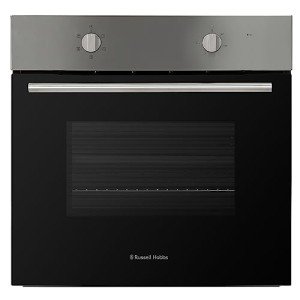The Main Problem With Integrated Ovens And Hobs And How To Fix It

The Ultimate Guide to Built-in Ovens: Enhancing Your Kitchen Experience
Built-in ovens have actually become a popular option in modern kitchens, offering a mix of performance, style, and benefit. Unlike conventional freestanding ovens, built-in ovens are integrated flawlessly into cabinetry, providing a streamlined look that can boost the aesthetic appeal of any kitchen. This short article checks out the various kinds of built-in ovens, their advantages, setup factors to consider, and maintenance pointers.
Comprehending Built-in Ovens
Built-in ovens are created to be installed straight into kitchen cabinets, allowing for a more personalized kitchen setup. They generally can be found in two main types: single and double ovens.
Types of Built-in Ovens
- Single Ovens: These systems provide one cooking compartment, ideal for smaller sized kitchens or homes where cooking needs are modest.
- Double Ovens: As the name suggests, these systems include 2 separate cooking compartments, enabling users to cook several dishes at different temperatures simultaneously. This is especially beneficial for large families or those who typically captivate guests.
- Steam Ovens: These ovens cook food utilizing steam, which can assist maintain wetness and nutrients. Steam ovens are gaining popularity due to their health benefits.
- Mix Ovens: These flexible appliances combine the functions of a regular oven and a microwave, making them best for quick cooking and reheating.
Secret Features to Look For
When thinking about a built-in oven, there are several features that can enhance your cooking experience:
- Smart Technology: Many contemporary built-in ovens come equipped with clever innovation, allowing users to manage their oven remotely by means of smart device apps. Features include preheating the oven, adjusting cooking times, and keeping an eye on cooking progress.
- Self-Cleaning Functions: Built-in ovens with self-cleaning abilities can conserve effort and time in kitchen upkeep.
- Convection Heating: This function distributes hot air for even cooking, making it ideal for baking.
- Security Features: Look for models equipped with functions like cool-to-the-touch oven doors and automatic shut-off options for included security.
Benefits of Built-in Ovens
Aesthetic Appeal: Built-in ovens offer a streamlined and modern-day appearance that can improve the overall design of a kitchen. helpful site can be incorporated into cabinets, making them less intrusive than freestanding models.
Area Efficiency: Built-in ovens optimize kitchen area, particularly in smaller sized cooking areas where every inch counts. They can be placed at eye level, making it much easier to keep track of cooking without flexing down.
Boosted Functionality: With their advanced features, built-in ovens use enhanced cooking experiences and increased functionality compared to standard ovens.
Setup Considerations
Installing a built-in oven needs cautious planning and factor to consider. Here are some bottom lines to bear in mind:
- Space Requirements: Ensure that the chosen oven fits comfortably into the offered cabinet area. Step the measurements precisely, accounting for ventilation and clearance requirements.
- Electrical Requirements: Built-in ovens generally need a devoted electrical circuit. Seek advice from with an electrical expert for correct setup.
- Ventilation: Proper ventilation is vital for optimum oven performance. Confirm that the installation area has sufficient ventilation to avoid getting too hot and ensure safe operation.
- Expert Installation: While DIY setup might appear appealing, enlisting the help of a professional can ensure that the oven is set up properly and safely.
Installation Steps
| Setup Step | Description |
|---|---|
| Action 1: Measure | Procedure the cabinet opening for your oven. |
| Step 2: Prepare | Prepare the electrical outlet and ventilation choices. |
| Step 3: Connect | Connect the oven to power, making sure all security measures are complied with. |
| Step 4: Secure | Protect the oven within the cabinets, using suitable screws and brackets. |
| Step 5: Test | Run a test to ensure the oven is functioning properly. |
Maintenance Tips
Regular upkeep can extend the life of your built-in oven and guarantee ideal performance. Here are some maintenance suggestions:
- Clean Regularly: Wipe down the oven exterior and tidy the interior frequently. Usage self-cleaning functions where offered.
- Examine Seals: Ensure that door seals are intact to preserve effectiveness and cooking performance.
- Display Performance: Pay attention to how your oven functions-- if you observe irregular cooking or unusual noises, it may need professional servicing.
- Follow Manufacturer Guidelines: Always follow the upkeep standards supplied by the manufacturer. This can assist prevent problems and guarantee that guarantees remain legitimate.
Frequently Asked Questions about Built-in Ovens
What is the distinction in between a built-in oven and a freestanding oven?
- Built-in ovens are integrated into cabinetry, providing a streamlined appearance, while freestanding ovens are standalone appliances that can be put throughout the kitchen.
Do built-in ovens need more maintenance than routine ovens?
- Not necessarily. Upkeep depends on use and cleaning routines more than the type of oven. Routine care is important for all ovens.
Can I set up a built-in oven myself?
- While it is possible to set up a built-in oven yourself, it is suggested to work with an expert to ensure safe and precise installation, especially regarding electrical requirements.
What are the average expenses of built-in ovens?
- Costs can differ significantly based on brand, functions, and specifications. Fundamental models may start around ₤ 800, while high-end designs can go beyond ₤ 3,000.
Are built-in ovens energy-efficient?
- Numerous modern-day built-in ovens are developed to be energy-efficient. Try to find models with an ENERGY STAR accreditation for the best efficiency.
In conclusion, built-in ovens are an outstanding addition to any modern kitchen, combining aesthetics with performance. By comprehending the different types of built-in ovens, their features, and the associated setup and maintenance requirements, house owners can make an educated decision that enhances their cooking experience and total kitchen style. As cooking innovation progresses, built-in ovens are likely to play an integral function in the future of home kitchens, guaranteeing delicious meals are prepared with ease and convenience.

